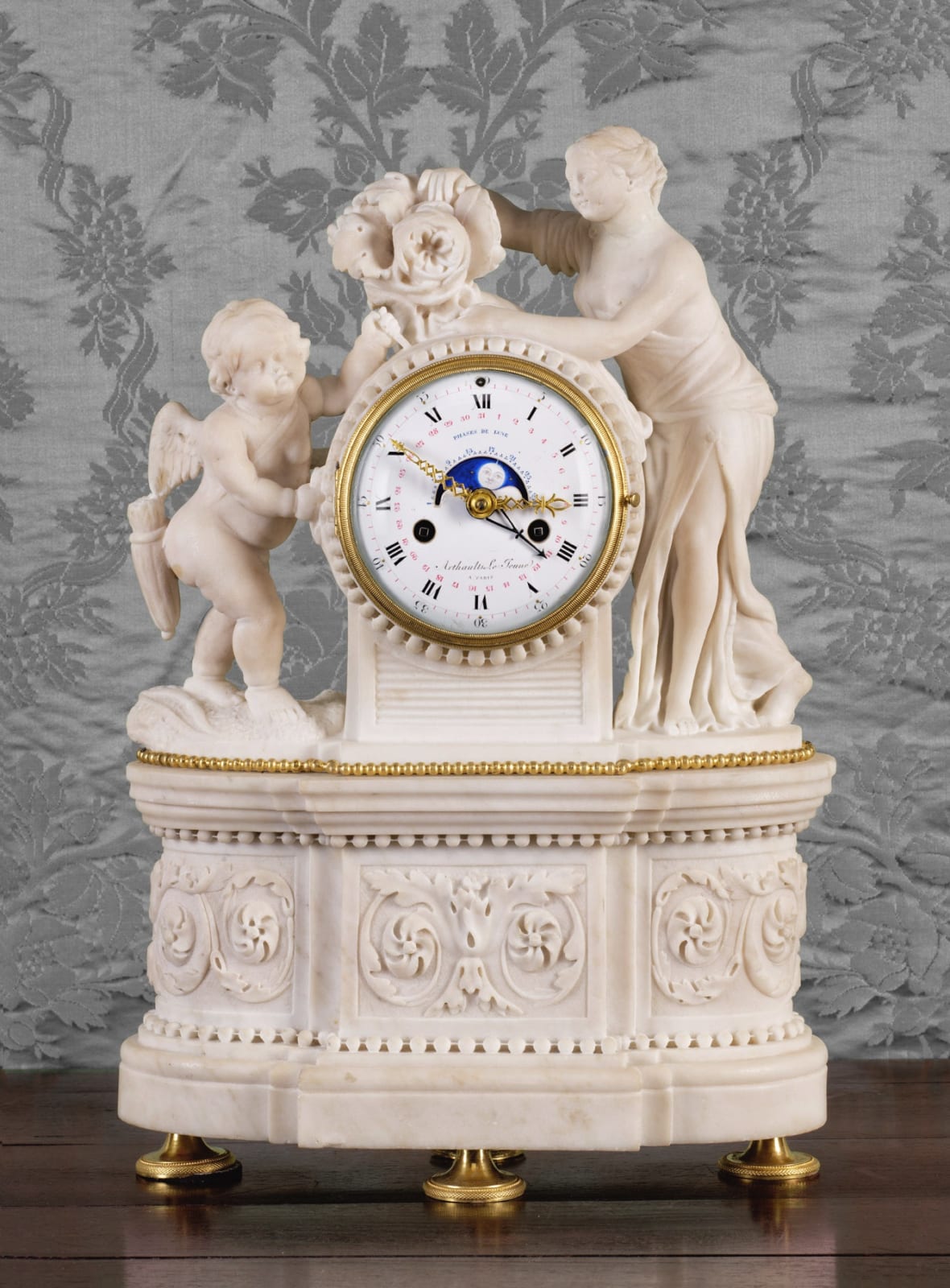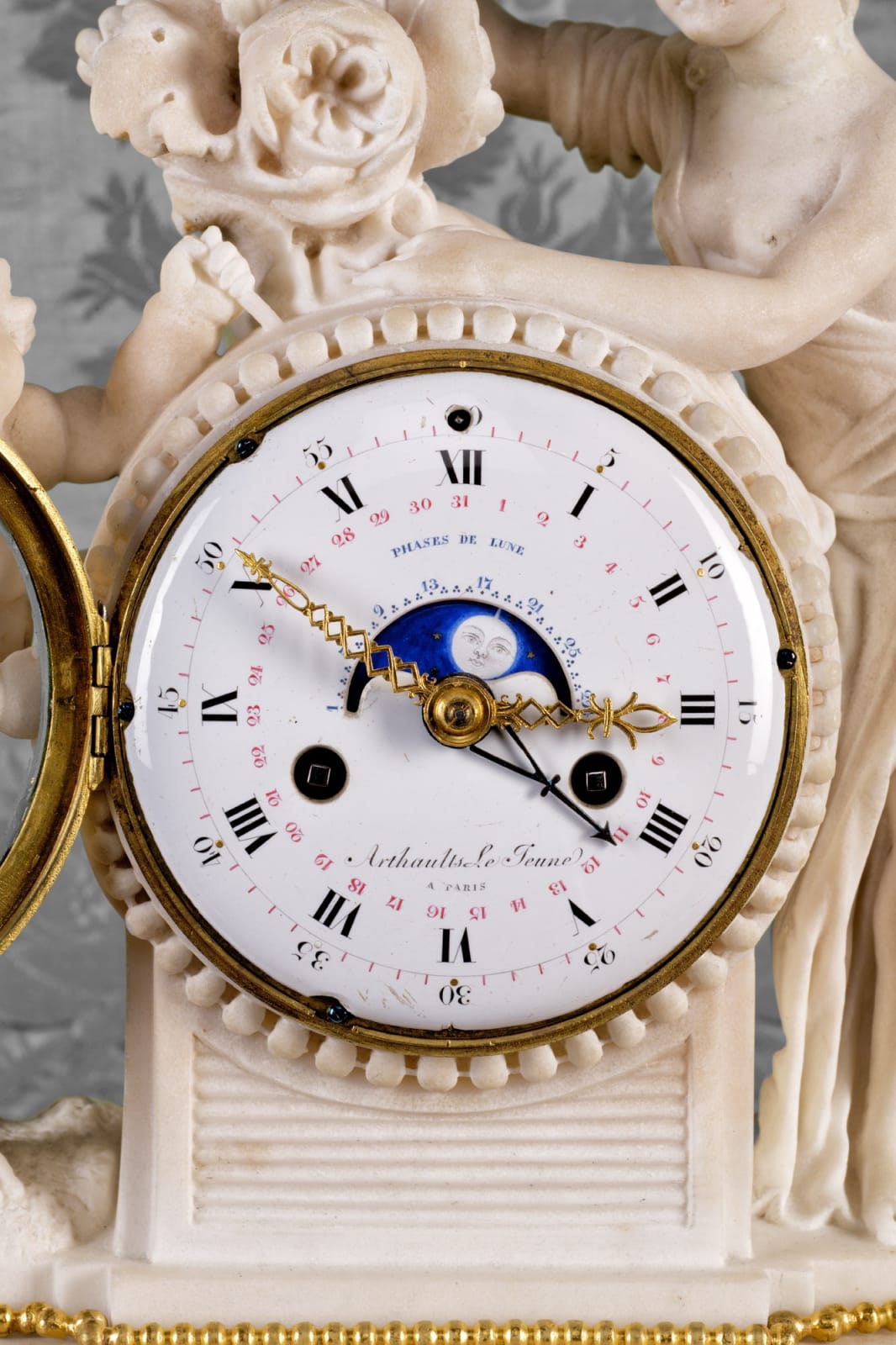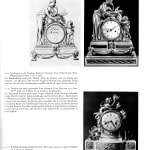
Illustrated in Hans Ottomeyer and Peter Pröschel, “Vergoldete Bronzen”, 1986, p. 247, pls. 4.6.9-10.
François Arthault
Further images
Literature
Illustrated in Hans Ottomeyer and Peter Pröschel, “Vergoldete Bronzen”, 1986, p. 247, pls. 4.6.9-10.
In addition, other comparable examples are illustrated in Elke Niehüser, “Die Französische Bronzeuhr”, 1997, pp. 209-211.
A very fine Louis XVI gilt bronze mounted white marble mantel clock of eight day duration, signed on the white enamel dial Arthaults Le Jeune à Paris, the dial with outer minute chapter ring marked with black Arabic numerals 5/10/15 etc with red indications in between, the inner hour chapter ring with black Roman numerals and then a further inner calendar ring with rare red Arabic numerals for the 31 days of the month, centred by a shaped semi-circular moon dial with a grisaille moon against a gold star studded blue sky marked around it with the 29 ½ days of the lunar calendar and above it: ‘Phases de Lune’, with a very fine pair of gilt brass for the hours and minutes and blued steel pointer for the calendar indications. The movement with anchor escapement, silk thread suspension, striking on the hour and half hour on a single bell, with outside count wheel. The white marble case with dial, with a beaded border, set within a plinth, surmounted by a bouquet of roses and foliage with the standing figure of a semi-draped Venus to the right and to the left a winged Cupid with a quiver of arrows slung across his back and his arrow on the ground beside him, the figures and dial drum on a shaped rectangular base with rounded ends, with a gilt bronze beaded border above and carved on the front and sides with foliate scrolls within panels with a beaded border below on a conformingly shaped stepped base
Paris, date circa 1785
Height 40 cm, width 20 cm, depth 12 cm.
Although the subject of this charming figural clock, showing the figures of Venus and Cupid is typical of the Louis XVI style, the actual case model is unusual, as is the fact that it is made in marble rather than of gilt bronze. Among similar gilt bronze examples portraying Venus, the mythological goddess of love, and her attendant Cupid, were those made by the fondeur-ciseleur François Vion (b. circa 1737 d. after 1790), of which a pen and ink drawing and finished clock are respectively illustrated in Hans Ottomeyer and Peter Pröschel, “Vergoldete Bronzen”, 1986, p. 247, pls. 4.6.9-10. In addition, other comparable examples are illustrated in Elke Niehüser, “Die Französische Bronzeuhr”, 1997, pp. 209-211.
The maker of the movement was François Arthault who was received as a Parisian maître horloger in 1763. Referring to himself as ‘Le Jeune’, he was the son of the maître clockmaker Pierre-André Arthault, who was recorded in Paris working at the enclos de l’abbaye Saint-Germain and rue Calandre. By 1765 François Arthault was established in Paris at rue de la Juiverie and then from 1772 at Quai Pelletier, where he died on 9th April 1788, having married Marie Viollier, by whom he had at least two children, namely François Augustin and Marie Françoise.




